Cavity Filter Technology Can Support Aviation Devices with Radar Altimeter Interference

The recent rollout of the 5G C-band frequencies has caused concerns for radar altimeter interference in avionic systems—including commercial transport, business, regional, and general aviation airplanes and helicopters.
The potential for interference between the telecom 5G C-band (3.7 to 3.98GHz) and radio altimeters (4.2 to 4.4GHz) frequencies is a growing concern in the aviation industry. The FCC and the FAA are addressing this concern with the radar altimeter interference by reducing the 5G transmission power around airports and limiting the 5G networks within about 2 nautical miles of runways at US airports.
Alternative Filter Solution:
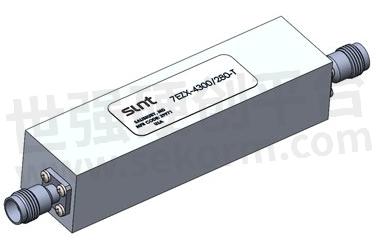
An alternative solution is presented that applies RF filtering of the 5G frequencies within the receiver of the radar altimeter. This filtering will suppress or attenuate the 5G signals from interfering with the radar altimeter system.
To be concise, consider the solution of implementing a filter in the radar altimeter. As stated above, these systems operate in the 4.2 to 4.4 GHz band and are used to provide precise altitude to aircraft. An RF filter placed within the radar receiver that significantly rejects the 5G C-band frequencies would mitigate the occurrences of system malfunction or erroneous altitude information. Furthermore, the additional loss of the filter must be kept minimal to maintain the performance and sensitivity of the radar altimeter. Finally, the filter should be designed to provide a robust, but cost-effective solution for the radar altimeter system.
Smiths Interconnect has developed a Combline Cavity Filter solution to address this requirement. This filter solution provides rejection of more than 55 dBc in the 5G band, while also providing an insertion loss of 0.7 dB maximum in the radar altimeter band. This effectively attenuates the potential interference within the radar altimeter to ensure proper functionality.
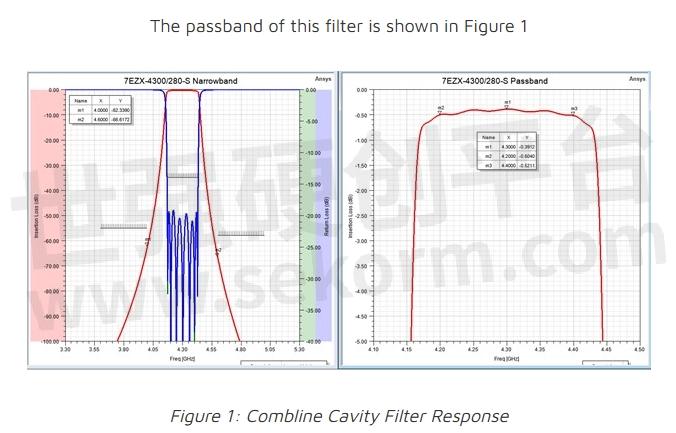
The filter’s electrical response has the specifications listed in Table 1. A typical cavity design to meet these specifications would have seven sections with each section having adjustable screws to enable a technician to tune the filter into the required final specifications. This is effective, but it increases the amount of labor required for each filter. Smiths Interconnect has designed a solution that greatly reduces the amount of tuning screws to significantly reduce the cost of the filter. This design will enable us to provide a solution that meets the required specification and also be cost-effective for the market.
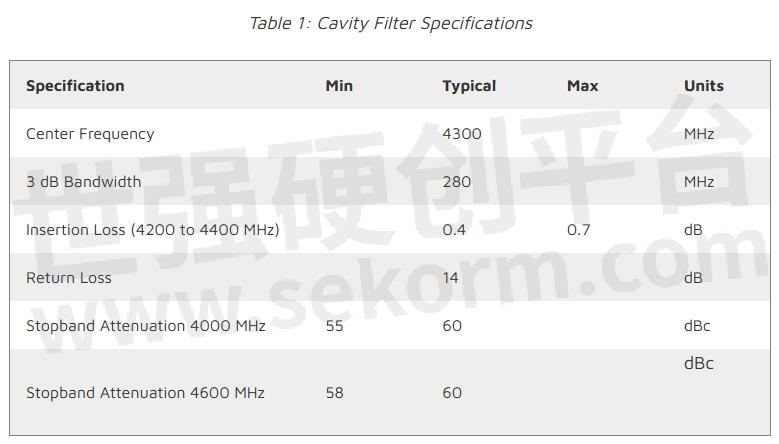
The compact filter solution size is 4.19” L x 0.98” W x 1.1” H in length, width, and height and will provide the market with a very efficient method of eliminating the interference between 5G frequencies and the radar altimeters on aircraft. The filter solution is compliant with the conditions outlined in DO-160G, Environmental Conditions and Test Procedures for Airborne Equipment. The outline of this filter is shown below in Figure 2.
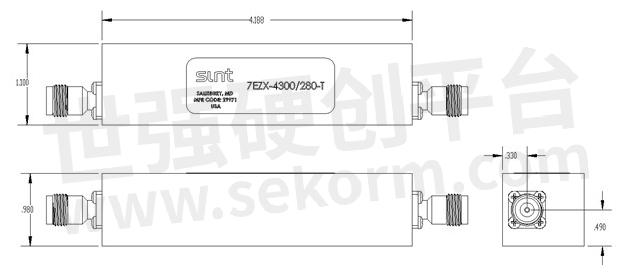
Cavity Filter Series
Cavity filter designs are available in the frequency range of 30MHz to 51GHz and with bandwidth options from less than 0.5% to over 66%. Cavity filters offer the user very low insertion loss, steep skirt selectivity, and narrower bandwidths than discrete component filters.
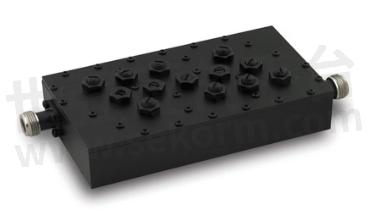
Smiths Interconnect is excited to support solutions to alleviate issues with RF and Microwave products. Smiths Interconnect RF Filter Select Plus Tool can assist with filter selection and topologies. As the RF communication spectrum continues to increase, Smiths will continue to provide solutions that meet the market demand. Smiths Interconnect RF Filters have been supporting the demand of Smiths Interconnect customers for over 35 years and Smiths Interconnect will continue to innovate Smiths Interconnect products to support this demand now and in the future.
- +1 Like
- Add to Favorites
Recommend
- The Pros and Cons of Different Filter Structures
- Filter Basics about Different Approaches to Q Factor
- What You Need to Know About RF Filter?
- The RF Characteristics That Define the Performance of a Filter
- Non-Hazardous All-Rounder Jowatherm-Reaktant® MR 614.50 Adhesives Perfect for Bonding Filter Medium
- How to Use the Different Frequency Dependencies to Manipulate Impedance and Create Various Filter Responses?
- Switch Filter Banks for Agile RF Receiver Design in Radar
- Smiths Interconnect Offered Isolators to Support NASA’s Europa Clipper Mission to Explore Jupiter’s Moon
This document is provided by Sekorm Platform for VIP exclusive service. The copyright is owned by Sekorm. Without authorization, any medias, websites or individual are not allowed to reprint. When authorizing the reprint, the link of www.sekorm.com must be indicated.






























































































































































































































































































































































































































































































































































































































































































































































































































































































